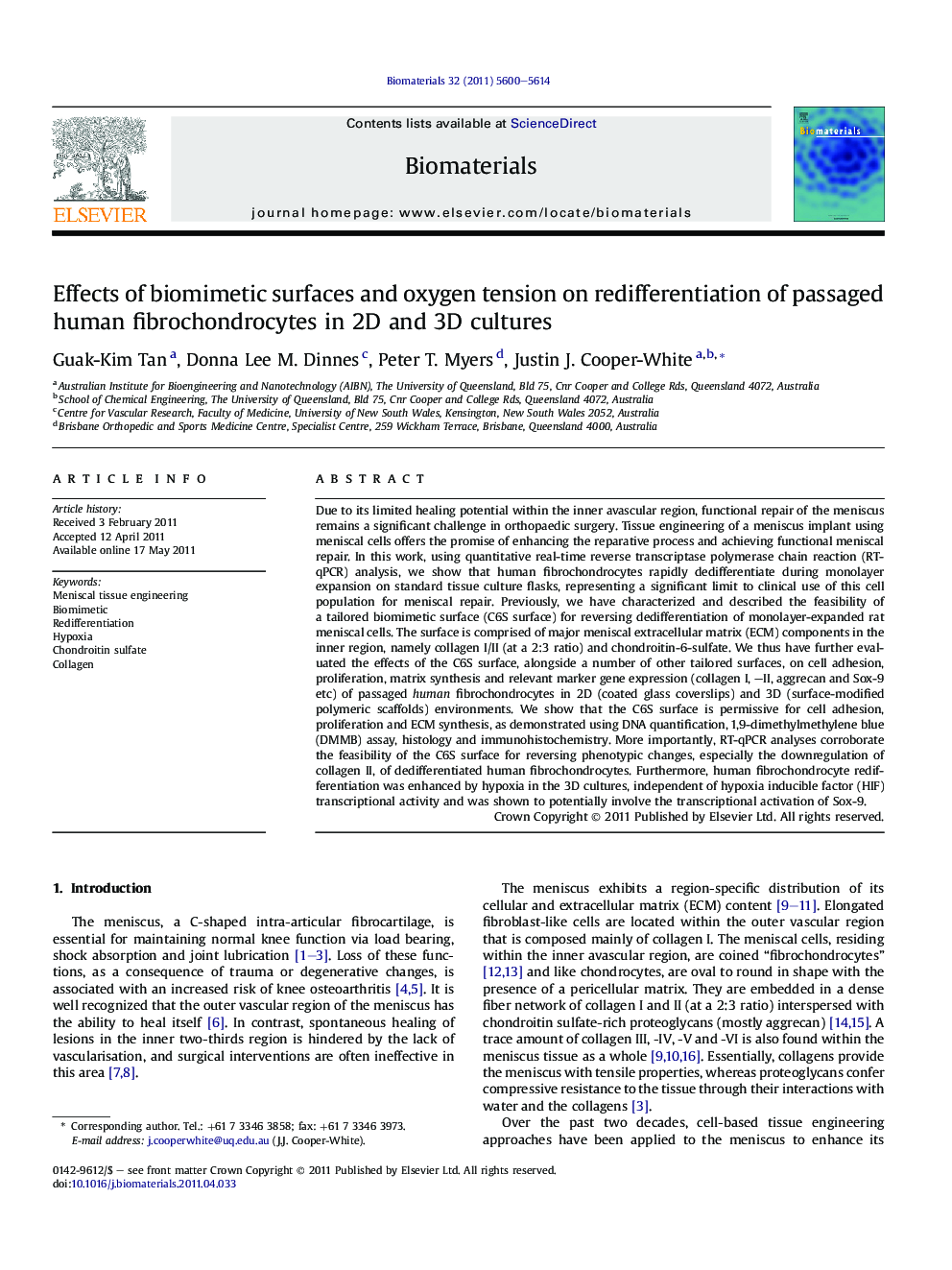| Article ID | Journal | Published Year | Pages | File Type |
|---|---|---|---|---|
| 8075 | Biomaterials | 2011 | 15 Pages |
Due to its limited healing potential within the inner avascular region, functional repair of the meniscus remains a significant challenge in orthopaedic surgery. Tissue engineering of a meniscus implant using meniscal cells offers the promise of enhancing the reparative process and achieving functional meniscal repair. In this work, using quantitative real-time reverse transcriptase polymerase chain reaction (RT-qPCR) analysis, we show that human fibrochondrocytes rapidly dedifferentiate during monolayer expansion on standard tissue culture flasks, representing a significant limit to clinical use of this cell population for meniscal repair. Previously, we have characterized and described the feasibility of a tailored biomimetic surface (C6S surface) for reversing dedifferentiation of monolayer-expanded rat meniscal cells. The surface is comprised of major meniscal extracellular matrix (ECM) components in the inner region, namely collagen I/II (at a 2:3 ratio) and chondroitin-6-sulfate. We thus have further evaluated the effects of the C6S surface, alongside a number of other tailored surfaces, on cell adhesion, proliferation, matrix synthesis and relevant marker gene expression (collagen I, –II, aggrecan and Sox-9 etc) of passaged human fibrochondrocytes in 2D (coated glass coverslips) and 3D (surface-modified polymeric scaffolds) environments. We show that the C6S surface is permissive for cell adhesion, proliferation and ECM synthesis, as demonstrated using DNA quantification, 1,9-dimethylmethylene blue (DMMB) assay, histology and immunohistochemistry. More importantly, RT-qPCR analyses corroborate the feasibility of the C6S surface for reversing phenotypic changes, especially the downregulation of collagen II, of dedifferentiated human fibrochondrocytes. Furthermore, human fibrochondrocyte redifferentiation was enhanced by hypoxia in the 3D cultures, independent of hypoxia inducible factor (HIF) transcriptional activity and was shown to potentially involve the transcriptional activation of Sox-9.
